Introduction
What Do Parakeets Need In Their Cage: Parakeets, often affectionately referred to as “budgerigars” or simply “budgies,” are delightful and colorful companions that have found their way into countless households around the world. These small, vibrant birds are cherished for their cheerful personalities, charming vocalizations, and striking plumage. To ensure the health and happiness of your pet parakeets train it is crucial to them with a suitable living environment, starting with their cage. The cage serves as a parakeet’s sanctuary, where they eat, sleep, play, and exercise. Creating the perfect habitat for your feathered friend is not only a matter of ensuring their physical well-being but also nurturing their mental and emotional needs.
First and foremost, the size of the cage matters significantly. Parakeets are active and energetic birds that require ample space to stretch their wings and fly short distances within the enclosure. A spacious cage allows for natural behaviors like flitting about, climbing, and exercising, all of which are vital for their physical health and mental stimulation. Additionally, the cage should be constructed with safety in mind. Parakeets are curious creatures prone to exploring their surroundings, which can sometimes lead to accidents. Make sure the bars of the cage are appropriately spaced to prevent them from getting their heads or bodies stuck.
It’s also crucial to choose a cage made from bird-safe materials, as some metals or coatings can be toxic to parakeets if ingested. Another essential consideration is the placement of perches within the cage. Parakeets rely on perches for rest, play, and sleeping. A variety of perches with different diameters and textures can help promote foot health and reduce the risk of foot problems. Natural branches or wooden perches are ideal choices, as they mimic the feel of tree branches in the wild. These toys can include bells, swings, mirrors, and puzzle feeders, among others. Regularly rotating and adding new toys will stimulate your parakeet’s curiosity and prevent them from becoming complacent.
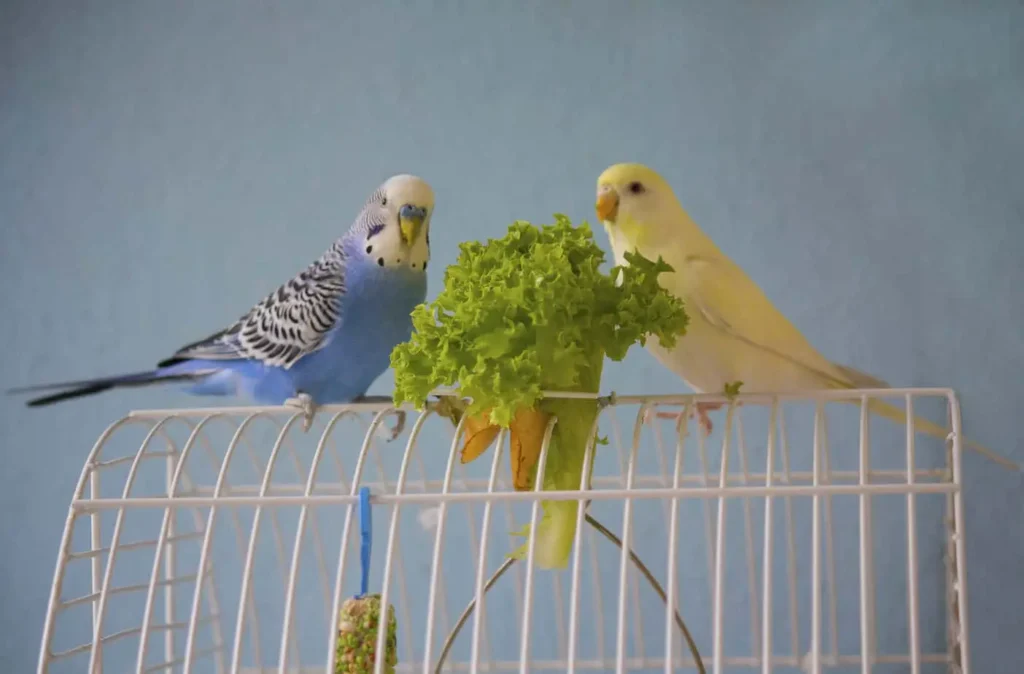
What do parakeets like to have in their cage?
Here are a few must-haves Perches: Parakeets need plenty of room to sit, fly, and exercise their legs. The best perches are made from wood or natural fibers such as sisal rope or hemp twine. Food dish: Parakeets should have a food dish large enough for them to eat comfortably.
Spacious Cage: Parakeets are active birds that love to fly and move around. A roomy cage is crucial to allow them to stretch their wings, hop from perch to perch, and exercise. Generally, the bigger the cage, the better. It should be wide enough to accommodate their wingspan, and the bars should be spaced appropriately to prevent injury.
Perches: Parakeets spend a significant amount of time on perches, so providing a variety of sizes and textures is essential. Natural wood branches or wooden perches can mimic their wild environment and help maintain foot health.
Toys and Enrichment: Parakeets are intelligent and curious creatures. They need mental stimulation to prevent boredom. Toys like bells, swings, mirrors, and puzzle feeders can keep them entertained. It’s a good idea to rotate toys regularly to maintain their interest.
Food and Water: Easily accessible food and water dishes are essential. Parakeets like to eat small meals throughout the day, so make sure to fresh food and clean water daily. You can also add a cuttlebone or mineral block for calcium.
What do parakeets need at the bottom of their cage?
The bottom of the cage should be lined with disposable paper such as newspaper or paper towels that can be thrown away every day. Newsprint is now free of lead, so it is non-toxic to birds, even if they chew on it.
Cage Liners: One common choice for the cage bottom is using cage liners or paper. These are disposable, easy to clean, and help absorb droppings and spilled food. Avoid using newspaper as it may contain ink that can be harmful to your parakeet.
Gravel or Sand: Some bird owners opt for gravel or sand as cage substrate. While it can help with digestion by providing grit, it also makes cleaning more challenging. Ensure that any substrate used is free of chemicals or pesticides and is safe for your parakeet.
Regular Cleaning: Regardless of the substrate you choose, it’s crucial to maintain cleanliness. Remove droppings, uneaten food, and soiled bedding daily. A weekly deep cleaning of the entire cage, including substrate replacement, is also necessary.
Bedding Material: You can use bedding materials specifically designed for birds, such as paper-based bedding or corn cob bedding. These options are dust-free and safe for your parakeet. Bedding helps maintain a dry and clean environment.
What do parakeets need to be happy?
Parakeets are smart birds that need sufficient mental stimulation to avoid boredom and stress. Place a variety of perches and toys in their cage, particularly bells, mirrors, and items of different colors and shapes that will intrigue the birds.
Social Interaction: Parakeets are highly social birds and thrive on interaction with their human companions and other parakeets. Spending time talking to, playing with, and providing companionship for your parakeet is essential for their happiness. Consider getting more than one parakeet to prevent loneliness, as they enjoy the company of their own kind.
A Spacious Cage: Parakeets are active and love to move around. A roomy cage allows them to fly short distances, hop from perch to perch, and engage in natural behaviors. A cramped space can lead to stress and unhappiness, so as large a cage as possible.
Varied Diet: A well-balanced diet is essential for a happy parakeet. Offer a variety of fresh fruits, vegetables, high-quality commercial parakeet pellets, and seeds. Fresh water should always be available. A diverse diet ensures they get the necessary nutrients and keeps mealtime exciting.
Toys and Enrichment: Parakeets are intelligent and need mental stimulation. Toys such as bells, swings, mirrors, and puzzle feeders keep them engaged. Rotate toys regularly to prevent boredom. Puzzle toys that dispense treats can be particularly stimulating.
What is a parakeets favorite food?
Parakeets love broccoli florets, dark leafy greens, finely chopped carrots, sweet potatoes, and other veggies. A seed mix is not going to provide adequate nutrition. You need to be feeding a nutritionally balanced diet. Pellets are an option, but parakeets love whole seeds.
Pellets: High-quality commercial parakeet pellets are specially formulated to a balanced diet. They contain essential vitamins, minerals, and nutrients. Many parakeets readily accept pellets as a staple food source.
Fresh Fruits: Parakeets often have a sweet tooth and enjoy a variety of fresh fruits. Apples, pears, grapes, bananas, and berries are usually well-received. To remove any seeds, pits, or cores, as these can be harmful.
Fresh Vegetables: Vegetables are essential for vitamins and fiber in a parakeet’s diet. Leafy greens like kale, spinach, and lettuce are excellent choices. Carrots, broccoli, peas, and bell peppers are also favorites. Chop them into small, manageable pieces.
Seeds: Parakeets naturally enjoy seeds, but they should be given in moderation because they are high in fat. Millet sprays and small amounts of sunflower or safflower seeds can be offered as occasional treats.
Can parakeets be happy in a cage?
Parakeets are loving creatures that crave the attention of their owners. Make wonderful pets for families living in small homes and apartments. Excellent choice for families with small children and other pets. Can comfortably live in smaller cages due to their small size.
Cage Size: The size of the cage is paramount. Parakeets need room to move, stretch their wings, and hop from perch to perch. A spacious cage gives them the freedom to exercise and engage in natural behaviors. A cage that is too small can lead to frustration and unhappiness.
Social Interaction: Parakeets are highly social birds. They thrive on interaction with their human caregivers and, if kept alone, may become lonely and bored. Consider having more than one parakeet or spending quality time with your single bird to companionship.
Enrichment: Parakeets are intelligent and need mental stimulation. Providing toys like bells, swings, mirrors, and puzzle feeders can keep them engaged and prevent boredom. Rotating toys and introducing new ones periodically adds variety to their environment.
Variety in Diet: A well-balanced diet is essential for a happy and healthy parakeet. Offering a variety of fresh fruits, vegetables, high-quality pellets, and seeds ensures they get the necessary nutrients and keeps mealtime exciting.
Should I cover my parakeet cage at night?
A benefit of covering your bird’s cage at night is that it provides a regular period of privacy not usually allowed during the day. Further, it tends to keep the bird quiet in the early morning when it would otherwise become active and vocal. lf you now cover your bird’s cage at night, continue to do so.
Privacy and Security: Covering the cage can a sense of privacy and security for your parakeet, mimicking their natural instinct to seek shelter and rest during the night. It can help them feel safe and reduce stress.
Reduced Light Exposure: Parakeets, like most birds, require a consistent day-night cycle. Covering the cage at night can block out external light sources, ensuring that your parakeet gets a restful night’s sleep. This is especially if the cage is located in a room with artificial or streetlights.
Reduced Noise: If your home is noisy at night, covering the cage can help muffle sounds and create a quieter environment, which can be beneficial for your parakeet’s sleep.
Temperature Regulation: Depending on your home’s temperature fluctuations, covering the cage can help maintain a stable and comfortable temperature for your parakeet during the night.
Do parakeets need toys?
Since parakeets are active and intelligent birds, provide a variety of interactive and engaging toys and rotate them regularly. Foraging toys, ladders, swings and mirrors are great parakeet toys. Each bird may have a preference on toys, so provide an assortment to prevent boredom or destructive behaviors.
Mental Stimulation: Parakeets are intelligent and curious birds. Toys challenge their minds, preventing boredom and stimulating their cognitive abilities. Puzzles, foraging toys, and toys with hidden treats encourage problem-solving and mental activity.
Physical Exercise: Toys encourage physical activity and exercise, which is vital for a parakeet’s health. Swings, ladders, and toys that promote climbing and movement help them maintain their physical fitness. Flying from perch to perch and interacting with toys is a form of exercise that keeps them in good shape.
Prevention of Boredom: Parakeets can become easily bored if they lack mental and physical stimulation. Boredom can lead to undesirable behaviors like feather plucking, excessive noise, or aggression. Toys a healthy outlet for their energy and prevent behavioral issues.
Beak Health: Chewing and manipulating toys are essential for maintaining the health of a parakeet’s beak. Parakeets naturally use their beaks to explore and interact with their environment, and toys satisfy this need. Wooden toys or safe materials for chewing can prevent overgrown beaks.
Are parakeets noisy?
Parakeets are noisy birds when it comes to whistles, talking, and daily chitter-chatter. Screaming on the other hand, is not a typical behavior of parakeets. Some parakeets might let out a light scream once in a while, but if you hear what sounds like a genuine scream from your bird, there might be something wrong.
Communication: Parakeets may make noise to communicate with their owners or other birds in the household. They can learn to mimic sounds, words, or phrases, and some parakeets are quite talented talkers. Their ability to mimic sounds can add a fun and interactive element to their noise.
Emotional Expressions: Parakeets are sensitive birds, and they may vocalize to express their emotions. This can include excitement, happiness, or even frustration. Paying attention to your parakeet’s body language can help you understand the meaning behind their vocalizations.
Environmental Factors: Parakeets may become noisier in response to changes in their environment. New people, pets, or even changes in their cage setup can trigger increased vocalization. Additionally, loud noises or disturbances in their surroundings may lead to louder calls.
Training: Some parakeets may learn specific noises or behaviors that get them attention or treats. For example, if they learn that a particular sound results in their owner coming over and treats or affection, they may repeat that behavior.
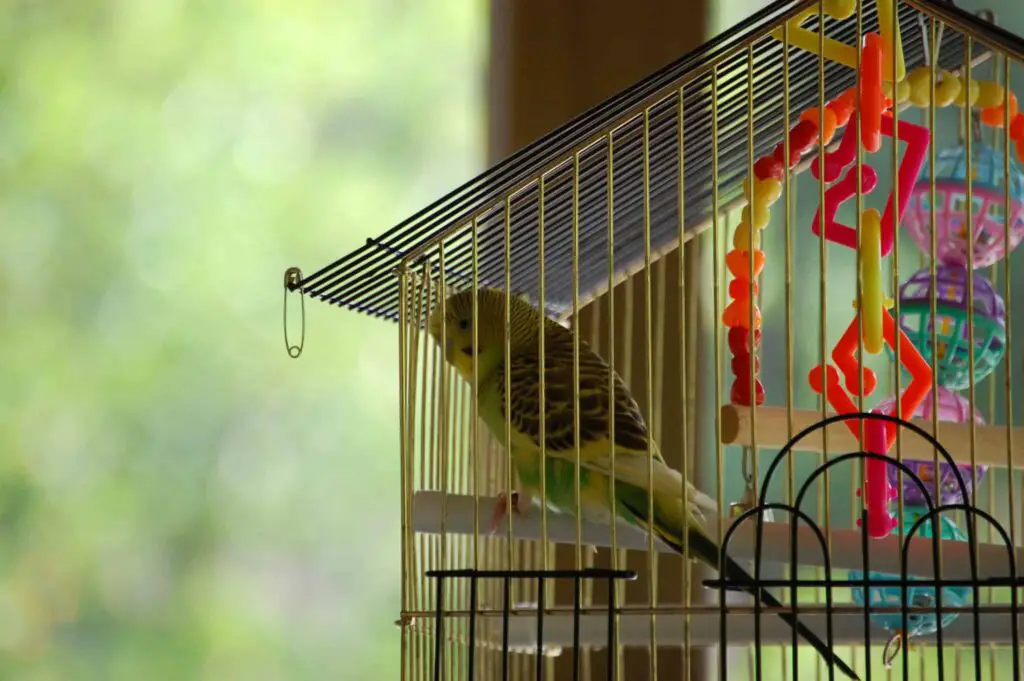
Conclusion
In fulfilling the needs of your parakeet in their cage is essential for their overall health, happiness, and well-being. These vibrant and parakeet intelligent birds rely on their living environment not only as a physical shelter but also as a place for mental stimulation, exercise, and social interaction. As responsible pet owners, it is our responsibility to create a suitable habitat that caters to their unique requirements. One of the primary considerations when it comes to parakeet care is the size and structure of the cage. Parakeets are active creatures that love to explore, climb, and fly short distances. Them with a spacious enclosure allows them to engage in natural behaviors, promoting physical health and preventing boredom.
Ensuring the cage is made of bird-safe materials and has appropriately spaced bars is also crucial to their safety. The placement of perches within the cage is another critical factor. Parakeets spend a significant amount of time perched, so offering a variety of perch sizes and textures supports their foot health and comfort. Natural branches or wooden perches mimic their natural habitat, a more enriching experience. Toys and enrichment items play a vital role in keeping your parakeet mentally stimulated. These items prevent boredom, encourage playfulness, and maintain their cognitive health.
Regularly rotating and introducing new toys into their environment can keep your parakeet engaged and happy. Proper placement of food and water dishes is also essential. Accessible and clean feeding stations are necessary for their nutritional well-being, and their location should prevent contamination with droppings. In a well-thought-out cage setup, considering size, safety, perches, toys, and feeding stations, is the foundation of a healthy and happy life for your parakeet. By meeting these fundamental needs, you create an environment in which your parakeet can thrive, and you’ll be rewarded with a joyful and affectionate feathered companion.

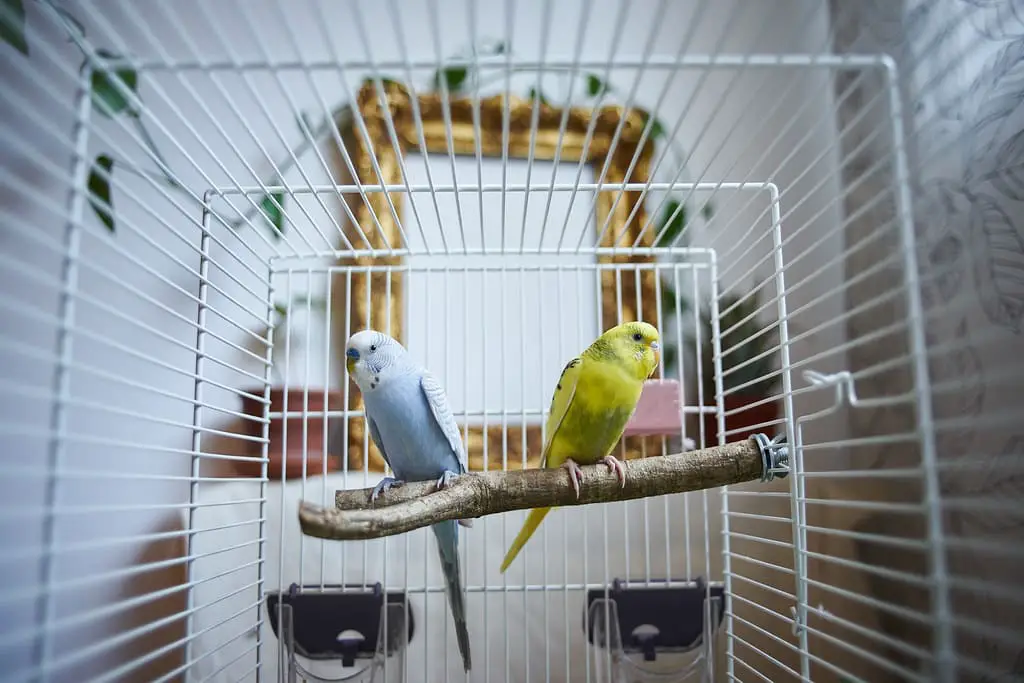
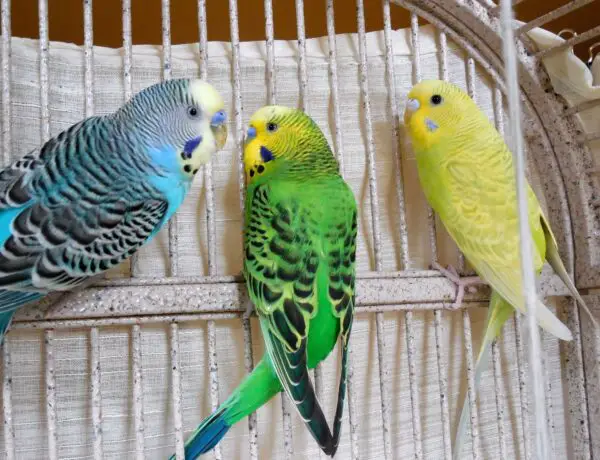
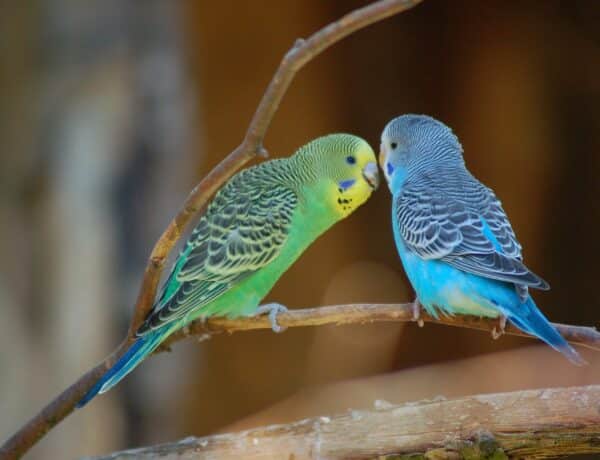
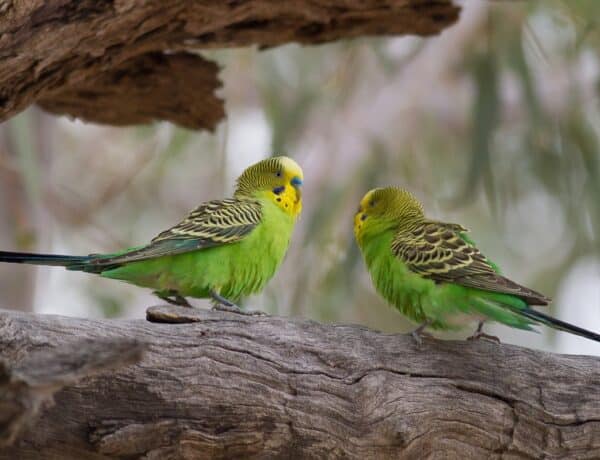
No Comments